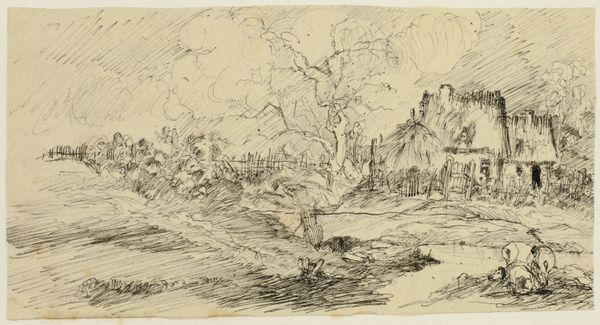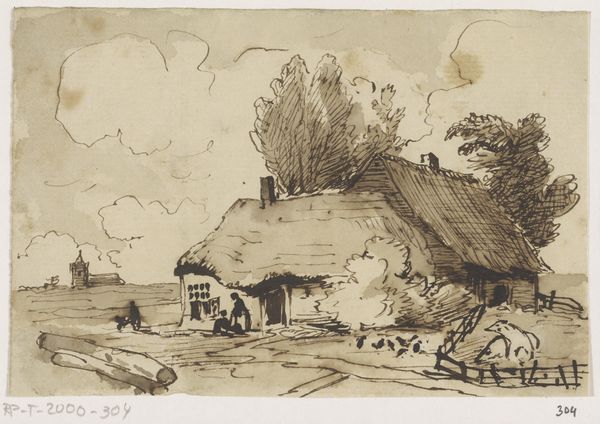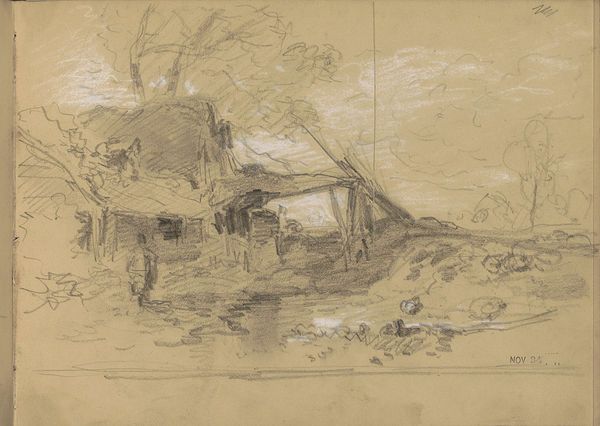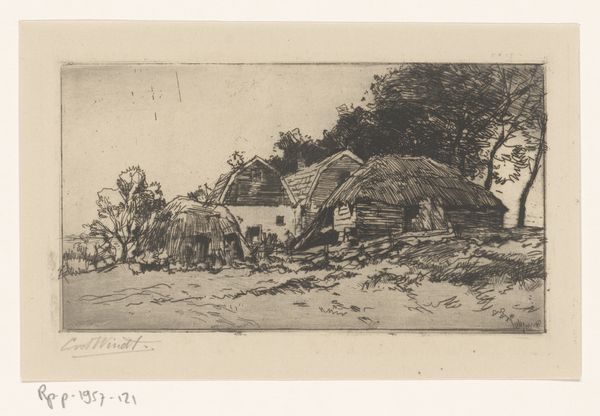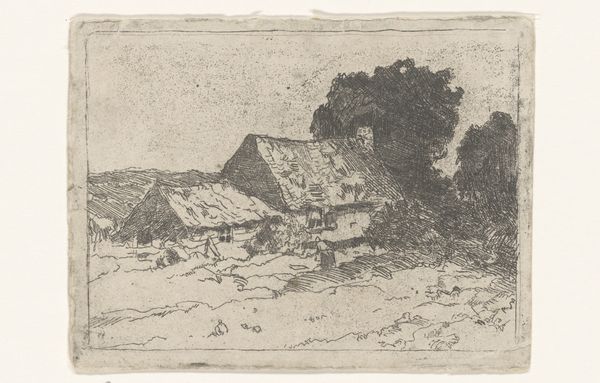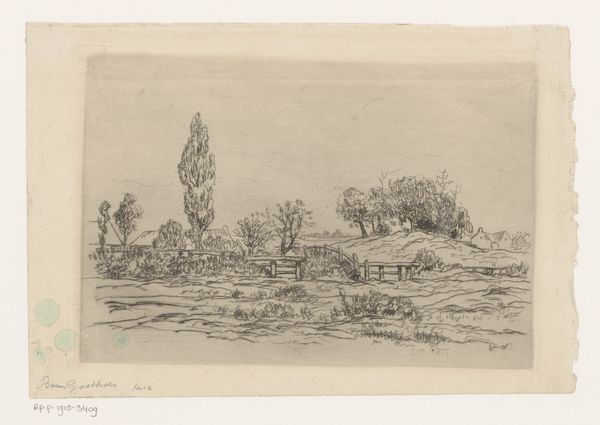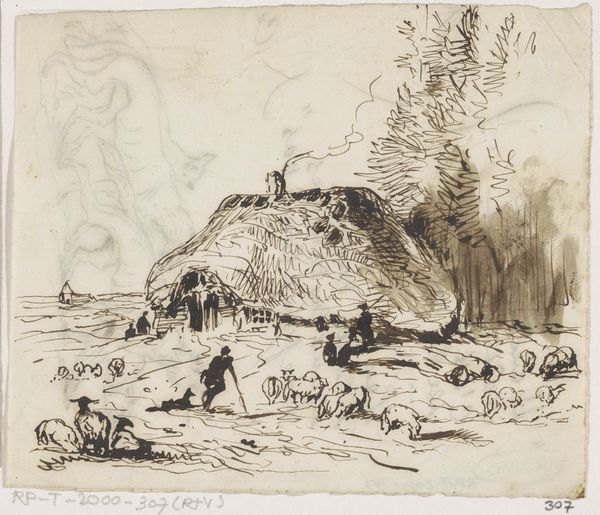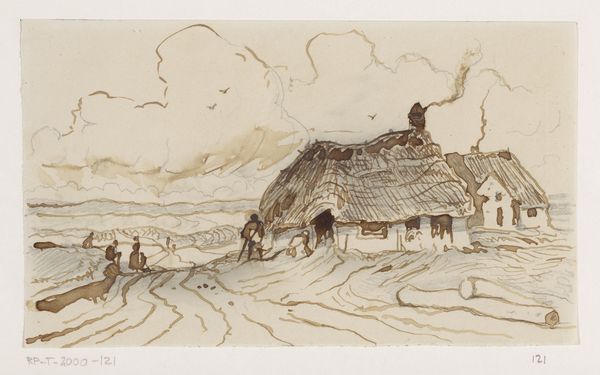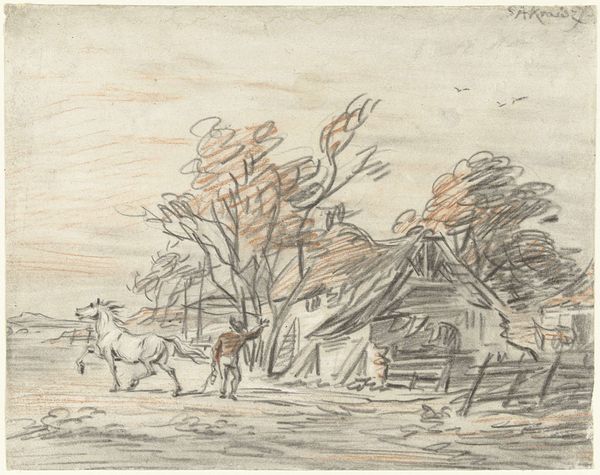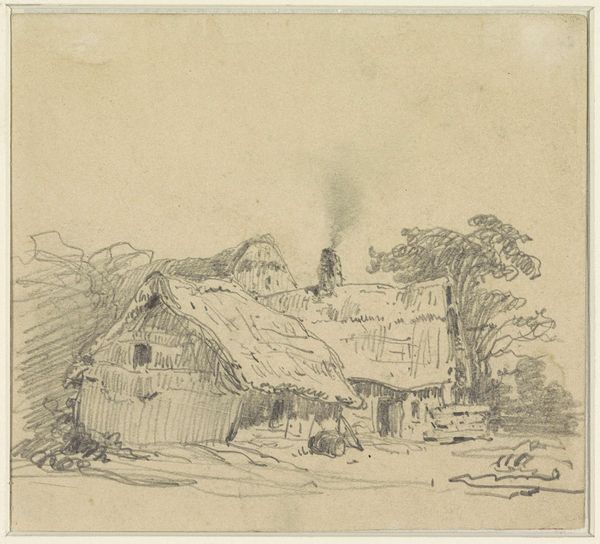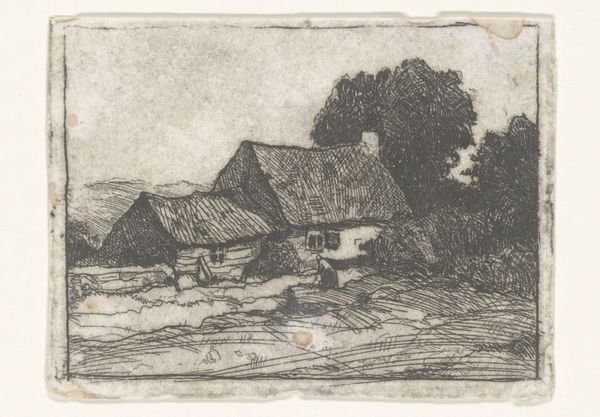
Dimensions: height 82 mm, width 146 mm
Copyright: Rijks Museum: Open Domain
Curator: Looking at this piece, what's your initial impression? Editor: It's incredibly textured, isn't it? The thatch roof is built up from these frantic pen strokes; it makes me want to touch it, to feel that layering. Curator: That materiality speaks to its place and time, certainly. This is "Boerderij," which translates to "Farmhouse," a drawing created between 1840 and 1880 by Johannes Tavenraat. It’s rendered in pen and ink, and exemplifies a kind of romantic longing for simpler rural life popular at the time. Editor: I see what you mean. There’s a distinct focus on process. Tavenraat doesn’t shy away from showing us exactly how it's constructed. You can almost feel his hand moving across the paper, building up the image stroke by stroke. Was this meant to be preparatory or a finished work, I wonder? Curator: That’s a fantastic question. While it has a sketch-like quality, the detail around the figures and the considered composition suggests this was a finished piece intended for sale to the rising middle class, a demographic eager to own images that validated a particular idyllic vision of Dutch heritage. Editor: So it's as much about selling an idea of rustic life as it is about portraying the labor involved in its creation. Are the figures meant to show this, perhaps emphasizing the collective toil, but romanticizing it at the same time? Curator: Absolutely. It plays into this narrative of community and the inherent nobility of farm work, skillfully dodging the brutal realities often associated with agrarian life in the 19th century. Note how the smoke, perhaps suggesting the hearth, creates a sense of warmth and welcome. The location, now housed at the Rijksmuseum, certainly adds to that framing. Editor: The lines do create this fascinating contrast. The farmhouse, built of earthy material, sits heavy with those dramatic, expressive strokes of labor. Yet, the scene hints at an escape from the modern world and connects us to tangible, historical production methods, it really bridges a gap between craft and idealized representation. Curator: In a way, it brings that perceived simpler life into the salons of the wealthy through art. Editor: A manufactured authenticity, in many respects, carefully crafted and expertly sold. Thanks for unveiling the complex stories of this piece! Curator: The pleasure was mine, there is always something to admire from how it's portrayed in this drawing.
Comments
No comments
Be the first to comment and join the conversation on the ultimate creative platform.
